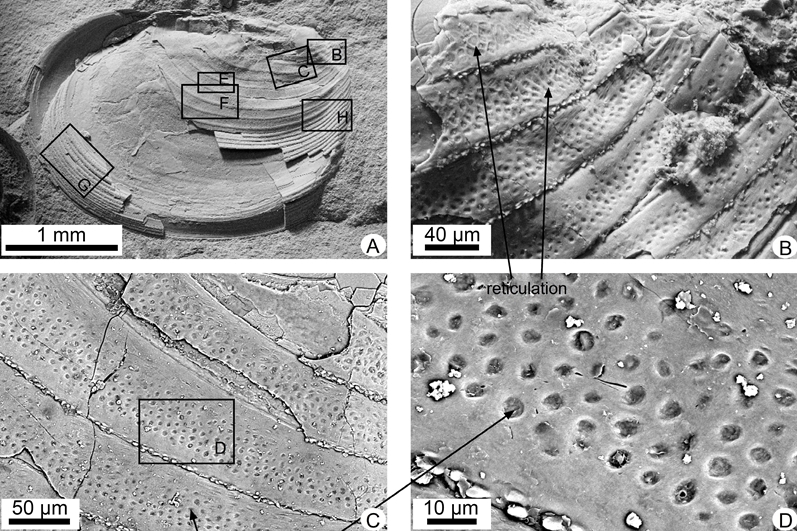
Clam shrimp Ordosestheria multicostata
Clam shrimps (conchostracans) are freshwater branchiopod crustaceans with a hinged chitinous or complex chitin-mineral carapace. They are known in the fossil record from the Devonian to recent. Since the Pennsylvanian, clam shrimps have been an important and widespread component in non-marine, aquatic biotopes. They are useful for biostratigraphic subdivision and correlation of non-marine successions.
The Yanjiestheria fauna occurs widely in the non-marine Lower Cretaceous rocks of East Asia and is principally composed of Neodiestheria, Orthestheria, Orthestheriopsis and Yanjiestheria. The nominated genus Yanjiestheria Chen in Zhang et al., 1976 was erected basing on specimens collected from the upper Albian Dalazi Formation in the Yanji Basin, Jilin Province, north-eastern China, and has been reported subsequently from the Lower Cretaceous in the south-eastern China, north-western China, Korea and south-western Japan.
Recently, M.Sc. TENG Xiao and Prof. LI Gang from Nanjing Institute of Geology and Palaeontology, Chinese Academy of Sciences recovered species of Ordosestheria from the upper Albian Dalazi Formation in north-eastern China, which were previously identified as orthestheriids. This means that the distribution of ordosestheriids is wider than we thought before, and this genus can be an index genus for the subdivision of the non-marine sequences in China.
According to previous studies the authors of the present research tentatively propose that ordosestheriids first originated from northern Africa in the early Barremian, during the early Aptian transgression they escaped from northern Africa and dispersed to the Ordos Basin of eastern Asia, then they further dispersed eastward to the western palaeo-Pacific coastal area and colonized in the Yanji Basin in late Albian.
This research was funded by the National Natural Science Foundation of China, and by Chinese Academy of Sciences (XDPB05).
Related information of this paper: Xiao Teng, Gang Li. 2017. Clam shrimp genusOrdosestheriafrom the Lower Cretaceous Dalazi Formation in Jilin Province, north-eastern China.Cretaceous Research, doi: 10.1016/j.cretres.2017.06.011.